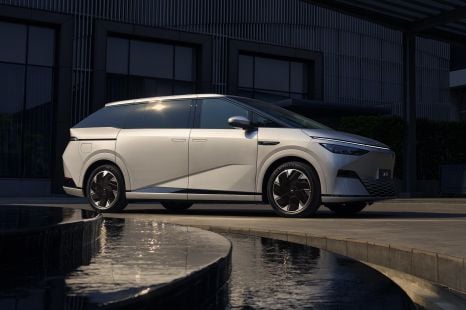

William Stopford
Will 2026 be the year of the people mover in Australia? China seems to think so
2 Hours Ago
As a complete package the Skoda Kodiaq RS hits the ball out of the park. Finding genuine gripes is damn near impossible and amounts to petty nitpicking
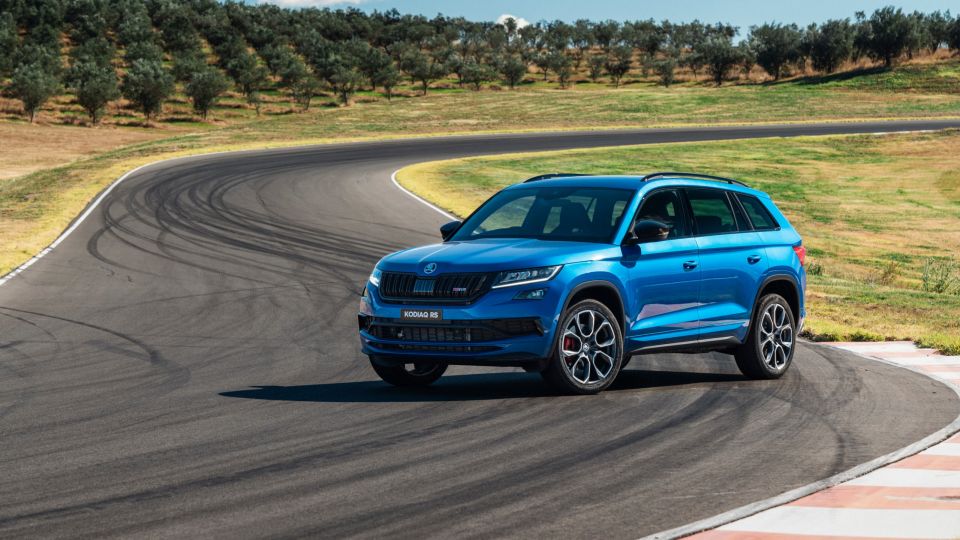
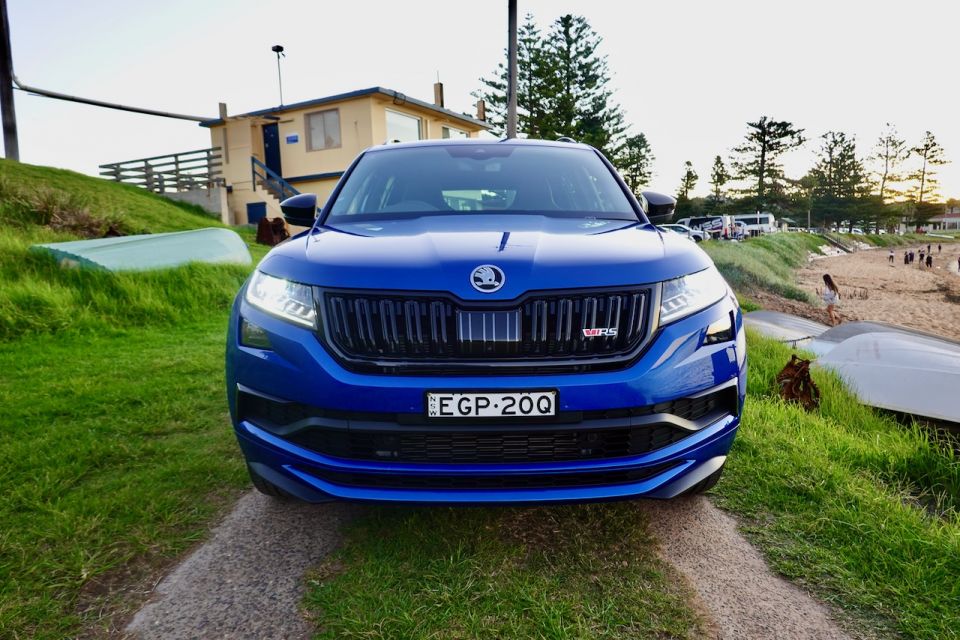

Senior Road Tester
New from
$65,990
excl. on-roads

Senior Road Tester
New from
$65,990
excl. on-roads


Senior Road Tester
New from
$65,990
excl. on-roads

Senior Road Tester
New from
$65,990
excl. on-roads
Quickly see how this car stacks up against its competition. Select any benchmark to see more details.
Where expert car reviews meet expert car buying – CarExpert gives you trusted advice, personalised service and real savings on your next new car.
It’s not something I can explain, but I’ve always put Skoda further up the brand ladder than Volkswagen. Put it down to the fact that the Czech-built brand has always been a bit quirky and less boring than its more vanilla rivals, even from its parent company.
There was also the articulate Czech product man (Peter, I think his name was) Skoda flew out for a launch a decade ago. He impressed me to no end with his infinite knowledge of the car, and why he felt it was more robust than the equivalent Volkswagen.
He also told the story of Czech workers hell-bent on keeping their jobs, which meant they’d pay extra attention to what happened on the assembly line. That resonated strongly with me.
Even then I felt Skodas were solid and particularly well screwed together. And truth be told, I’ve been a fan ever since, though not always when it came to styling. To me the designs were a bit naff – the grille had an Eastern-bloc clumsiness to it.
Perhaps they were still trapped in the past – understandable given the Czech Republic had to endure a Russian military presence between 1968 and 1991, with creativity likely taking a back seat during that time.
Snapped up as a wholly-owned subsidiary of the vast Volkswagen Group in 2000, Skoda sold over 1.24 million global car sales in 2019.
Despite the global sales numbers, it’s still a brand that struggles to make it onto buyer radars in Australia. It’s made inroads, but it’s hard to argue it’s anything other than a challenger brand fighting for consideration first, volume second.

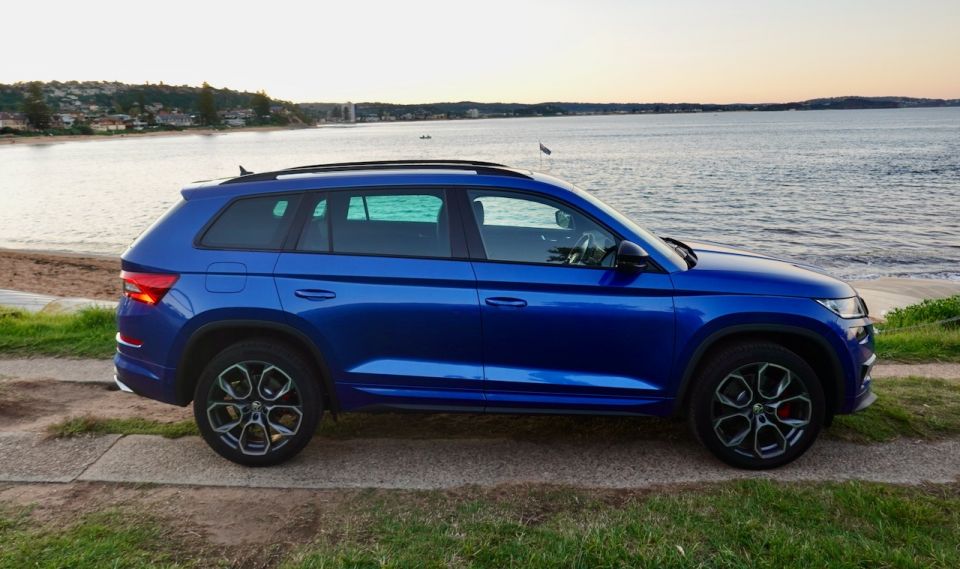
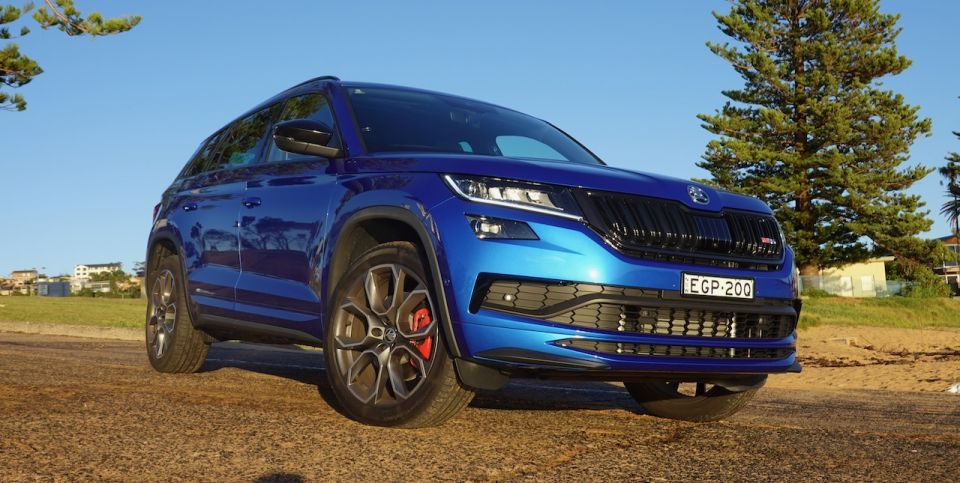
Well, buyers not familiar with Skoda are doing themselves a huge disservice, because the new Skoda Kodiaq RS will blow your socks off.
And before anyone fires back (including our very own Paul Maric) with misguided criticisms in relation to the first Skoda SUV to bear the RS moniker, it’s worth touching on its success at the Nürburgring Nordschleife.
In 2018, Sabine Schmitz lapped the Green Hell in 9:29.84, handing the Skoda Kodiaq RS a new seven-seat SUV record.
It’s a big jump from the next-in-line to the Kodiaq throne, the $52,990 before on-roads 140 TDI Sportline, which is less powerful and doesn’t get the various performance upgrades to the chassis.
And of course, the RS is more highly specified inside.
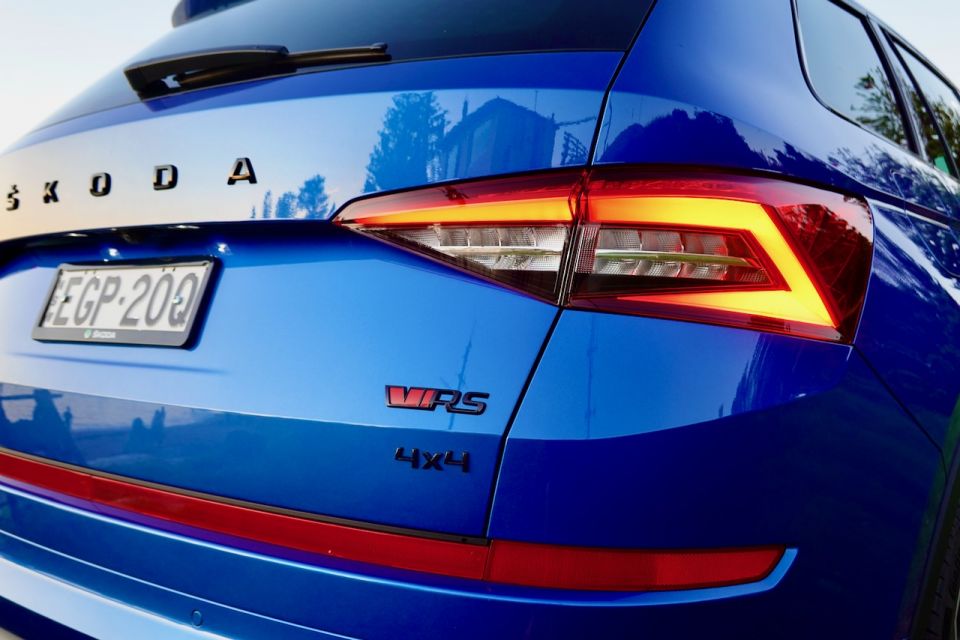
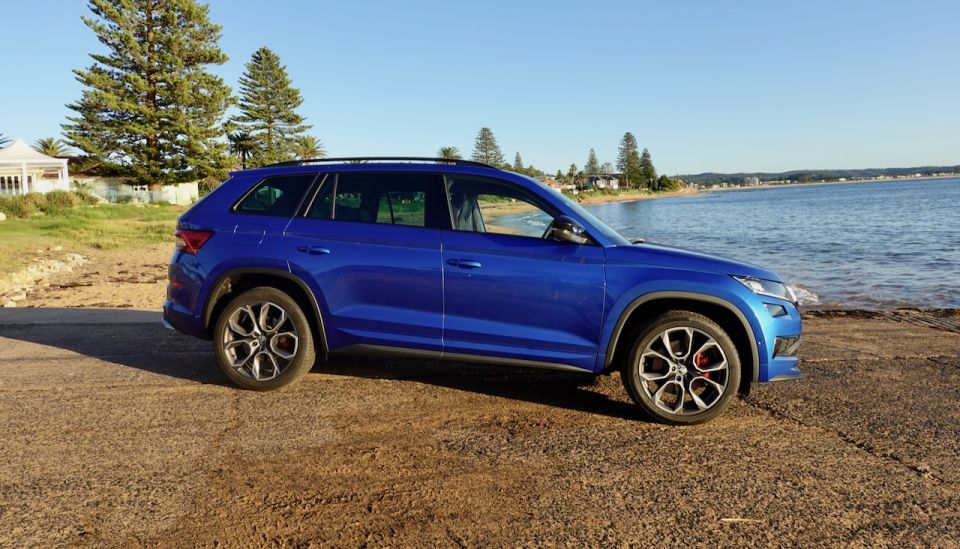
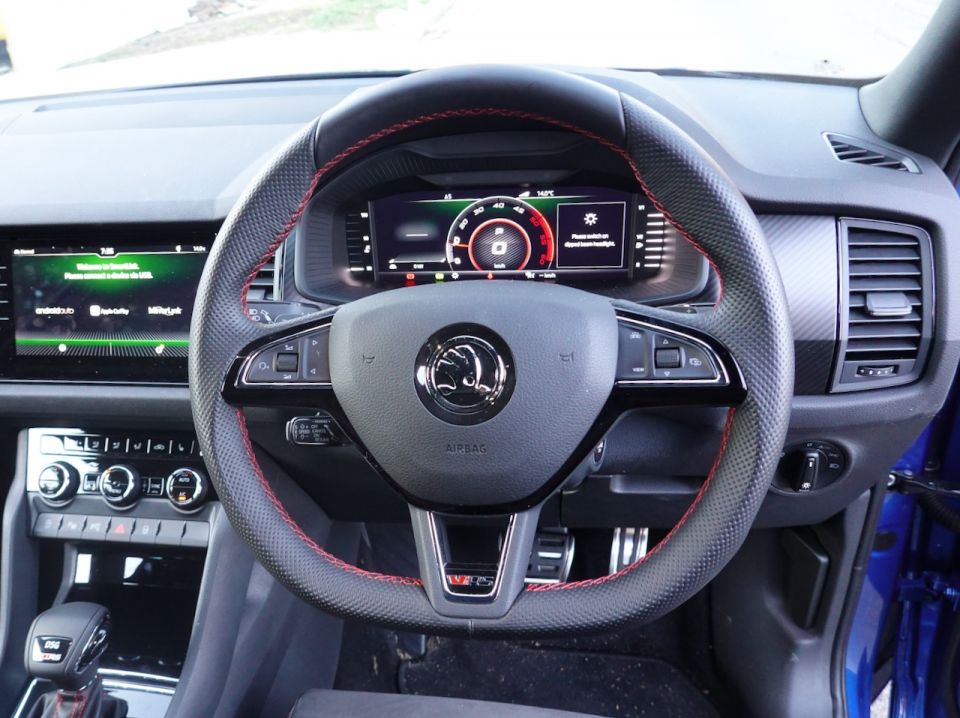
Options are few and far between, but our tester was equipped with a panoramic sunroof ($1900) and Race Blue metallic paint ($770).
Only the side steps ($1300) were missing. They look good, but getting in/out of the Kodiaq is a piece of cake, even for oldies.
We like Race Blue, but there are another six appetising colours in the RS palette (metallic white, silver metallic, steel grey, grey metallic) and every one of them would do just fine – but take a look at the red for something special.
Coming up with rivals for the Kodiaq RS isn’t easy. I can’t think of any with this kind of mid-sized packaging. There aren’t many SUVs with seven seats, a heap of kit, and a performance engine at this price point.
The obvious head-to-head is the platform-sharing Volkswagen Tiguan Allspace, but it’s a petrol-only for now.
At a stretch, you might take a look at the Land Rover Discovery SD4 SE for a power and equipment match, but it’s well off the pace and starts from $83,450.
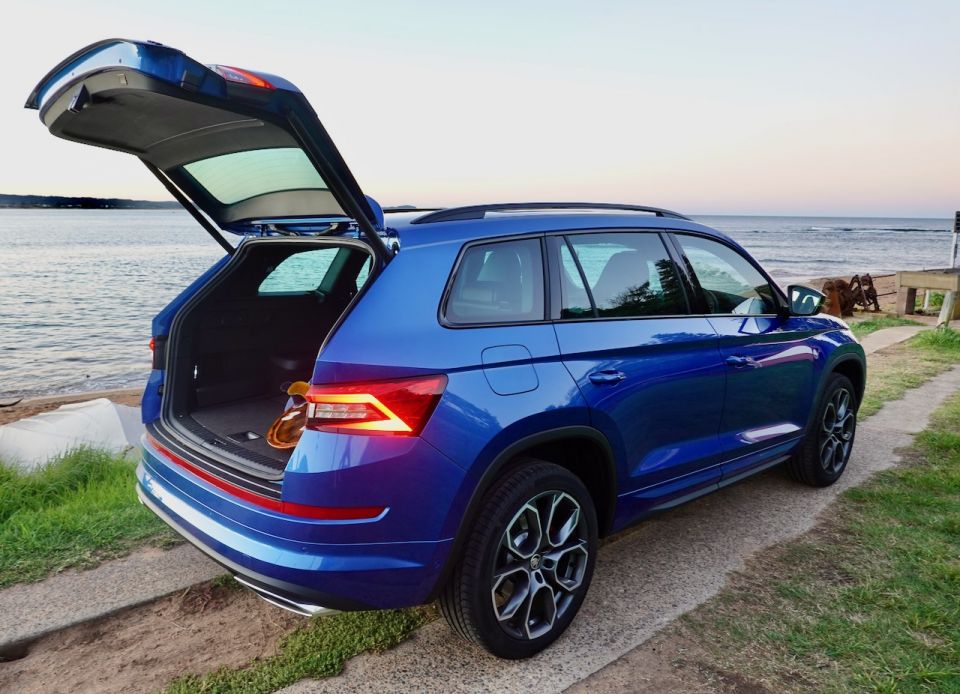
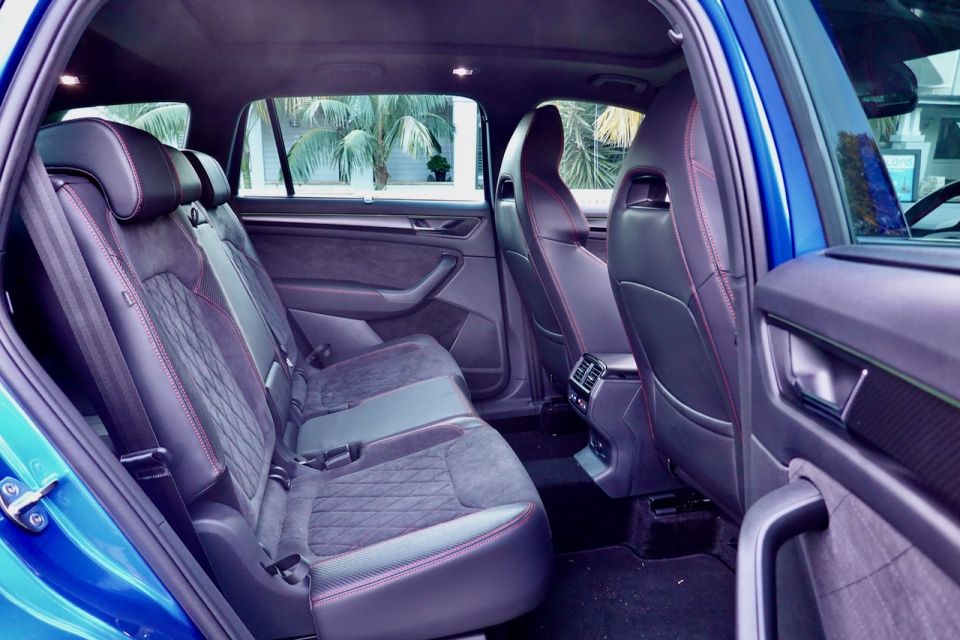
There’s also the Volvo XC60 D5 R-Design priced from $76,990 before on-road costs, which matches the Skoda on power but is six-tenths slower to 100km/h.
Japanese comparisons are limited to the top-spec Mazda Asaki AWD CX-8 from a tad more than $63,090 before on-road costs but it’s not from the same planet in terms of performance.
Skoda has always been big on filling its cars with gadgets, but with the RS it has gone harder. Good luck finding them all, because chances are you won’t discover the full complement until you’ve had this thing for a good while.
Here’s a tip – start with the umbrellas in each of the front doors and work your way back from top to bottom.
Buy your new car without the stress. It's fast, simple and completely free.

Great service from Travis and team, second time I have used this business would not hesitate to recommend them to anyone
Craig C.
Purchased a Ford Ranger in Sunshine Coast, QLD
CarExpert helped Craig save thousands on his Ford Ranger, now let us save you on your next new car.
Find a dealEverything, the kitchen sink, and then some. Seriously. We’ll dive into that shortly when we take a look inside the Kodiaq RS.
Visually, I think Skoda could have done more to beef up the stance of the RS because if you not really in the know, you could easily mistake it for the 140TDI Sportline.
Granted, the front bumper is deeper with more intakes for extra toughness but the blacked-out grille looks similar, as do the body-coloured body-kit mouldings.
Around back, it’s more of the same bar the slightly more pronounced exhaust tips and full-length reflector beam across the full width of the rear. And, while the 20-inch alloys are a decent match for the RS’s profile, the 235/45 tyres look decidedly normal on this SUV.
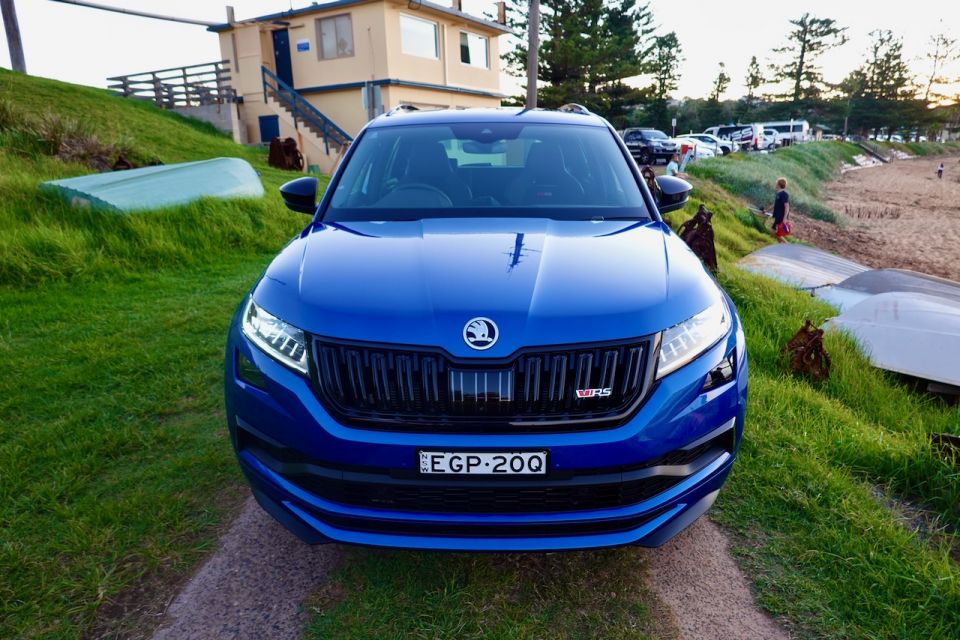
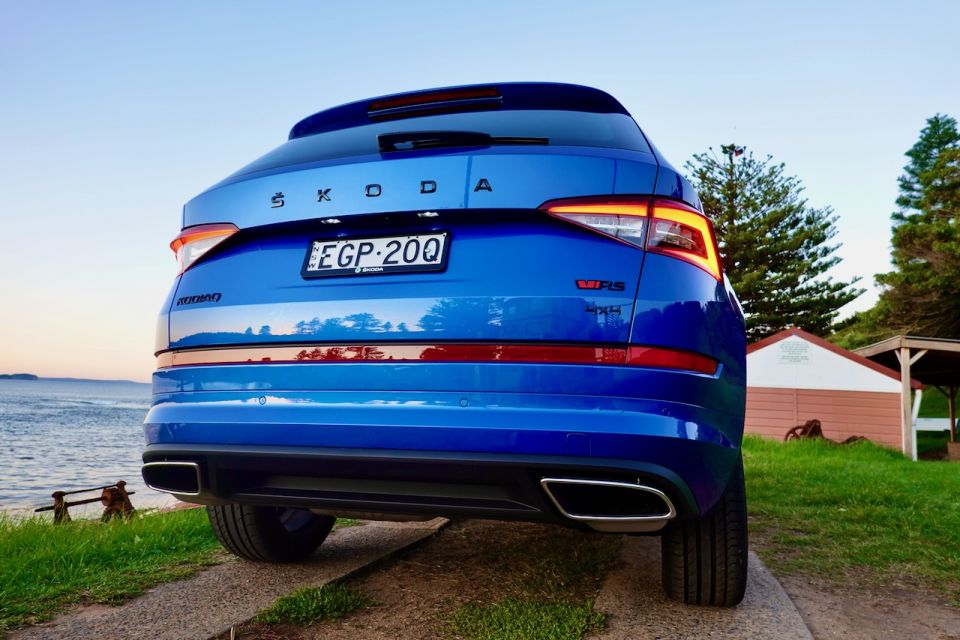
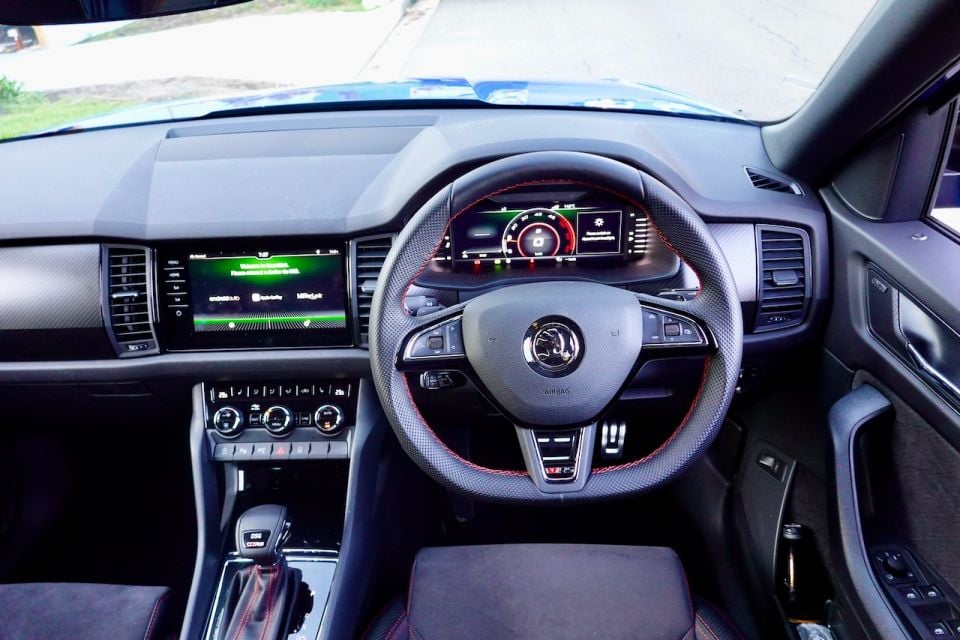
At least Aussie versions are shod with top-notch Continental brand ContiSportContact 5 tyres which delivered truly excellent grip and traction – especially in the wet.
Frankly, it’s all a bit subtle for my liking. If you’re going to do a performance SUV and charge accordingly, you can bet buyers want their RS version to stand out a tad more than it does.
They compliment the specially-tuned suspension with standard adaptive dampers, and the Kodiaq’s all-wheel drive system can send as much as 85 per cent of torque to an individual wheel for the best possible traction.
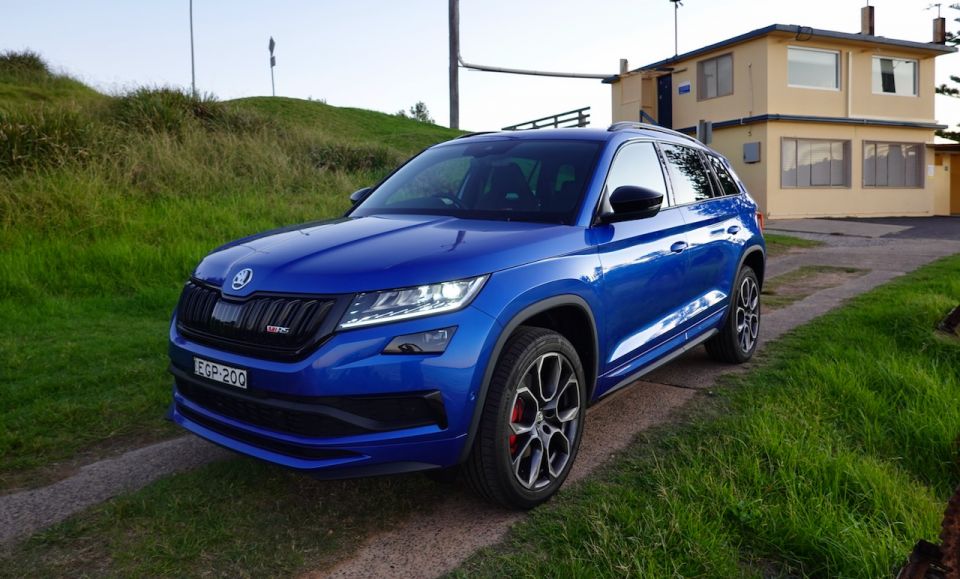
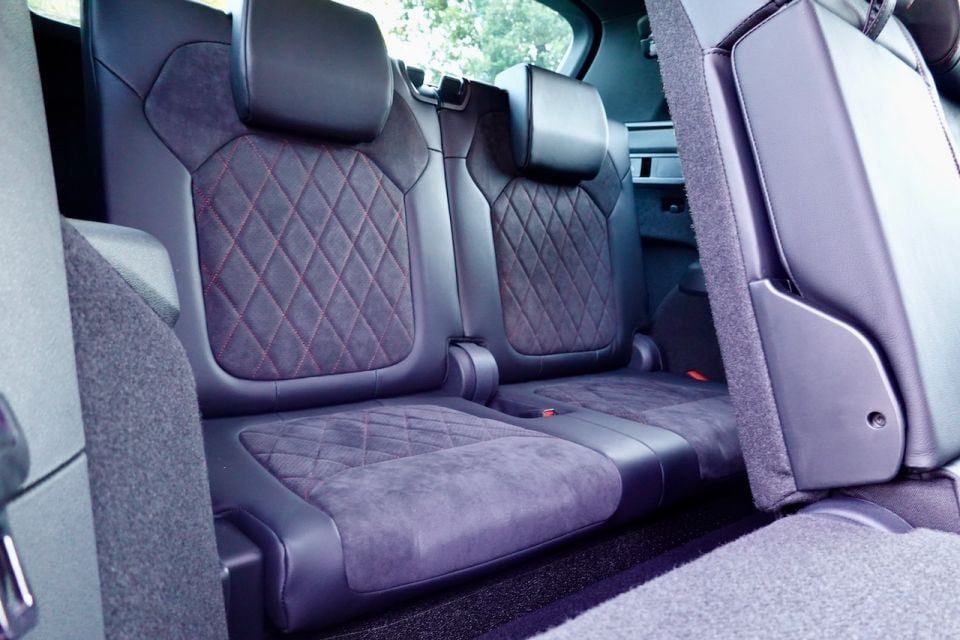

We like its dimensions, too. The Kodiaq is a good length (4697mm), putting it at the pointy end of the mid-sized SUV category. From side-on it looks that way, too.
It’s longer than the Peugeot 5008 (4641mm), Toyota RAV4 (4600mm) and even the Lexus NX (4640mm).
Looks are enhanced by Kodiaq’s LED light signatures at both ends. The headlights and daylight running lights are particularly distinctive, and give the RS real presence at night.
Same goes for the taillight assembly and its after-hours glow.
Opening the driver’s door for the first time I noticed what felt like part of the door trim coming away.
Silly me, I’d forgotten about Skoda’s ingenious automatic door protection system that covers the leading edge of the doors, protecting the paint from any unforeseen walls, poles, or other cars. Brilliant.
You’ve got two umbrellas, too, discretely tucked away inside hidden compartments in the doors (just like a Rolls-Royce) should you forget the storm-proof versions from home.
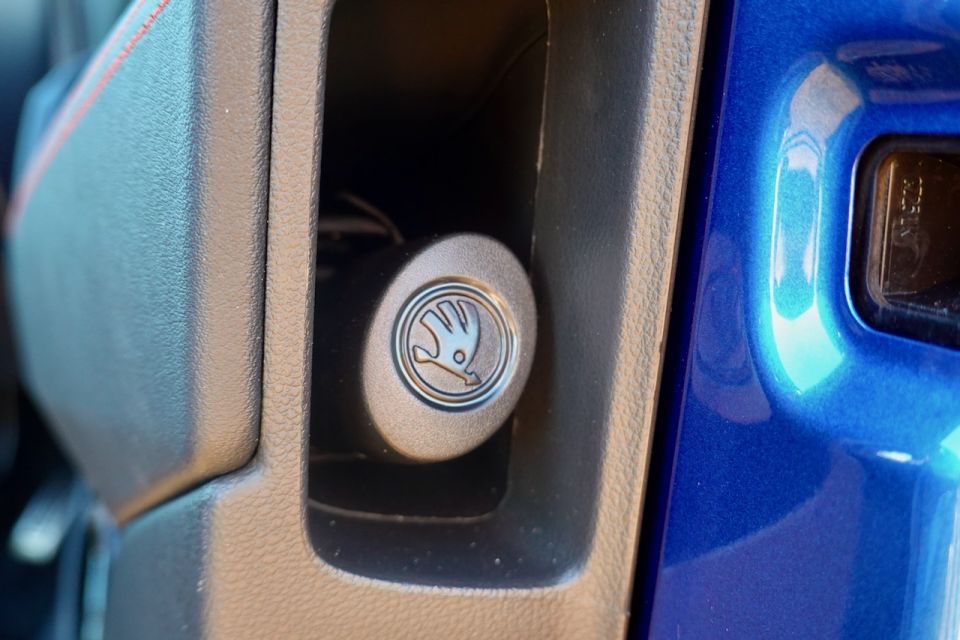
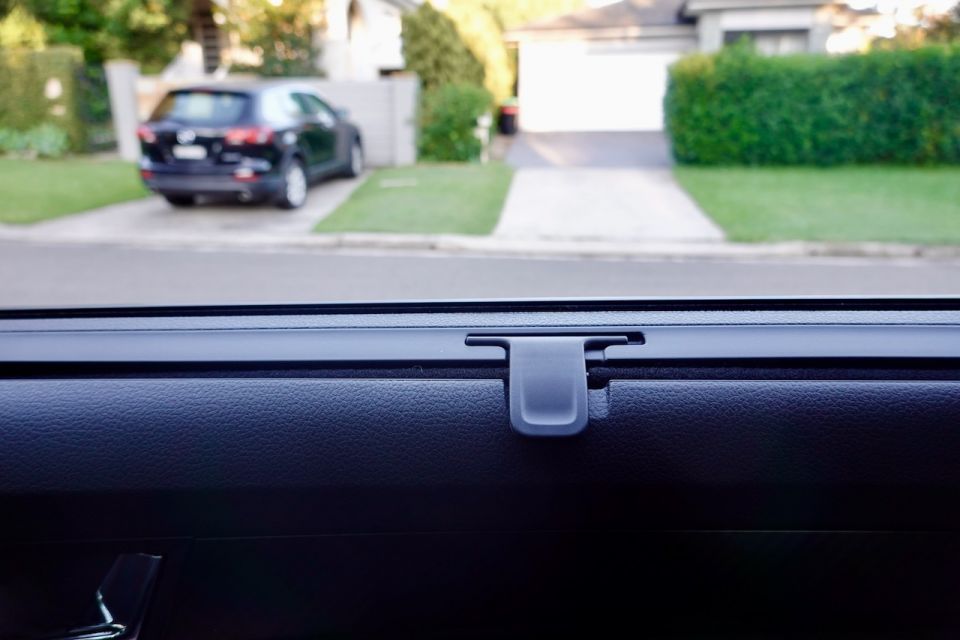

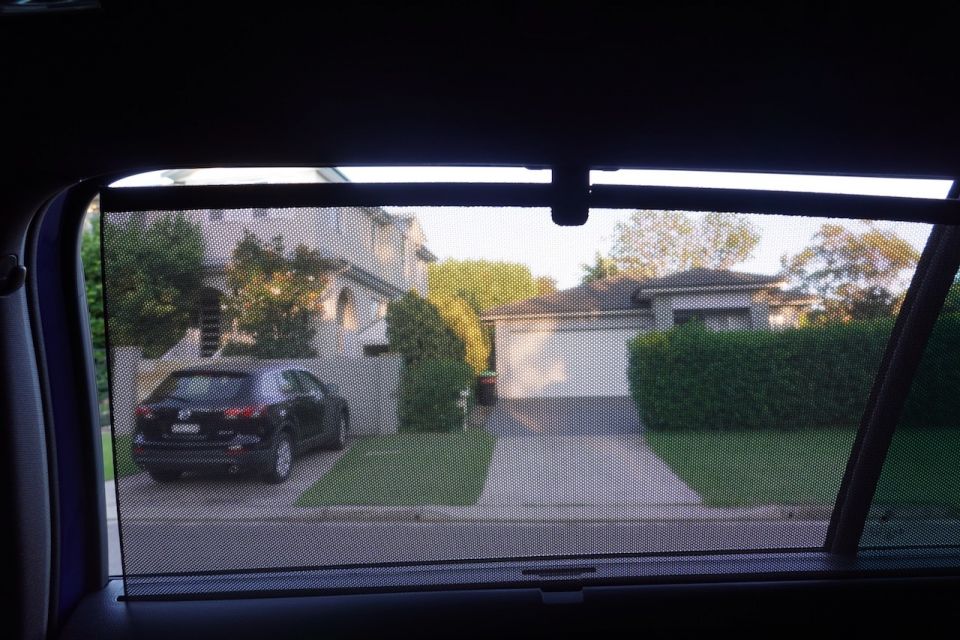
The list of equipment is endless, but one highlight is the heavily-bolstered sports seats wrapped in combination Alcantara and leather with a quilted pattern, contrast red stitching, and an embossed RS logo.
As well as being incredibly comfortable the support is both effective at maintaining a bolt-upright torso while driving the RS hard, but not in any way restrictive like some. They also set the tone for the car’s distinctively sporty character.
There’s more Alcantara on the doors, while the flat-bottomed steering wheel is a real treat.
Other highlights include LED headlights with adaptive high-beam assist and LED fog lights with cornering function, auto headlights and wipers, heated front and rear seats, and a hands-free electric tailgate for opening and closing.
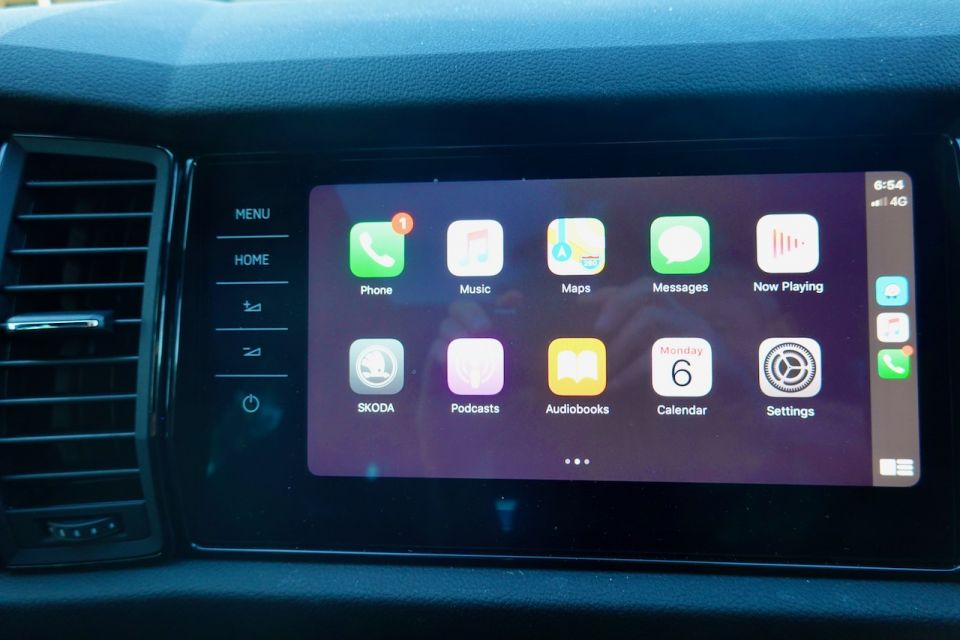

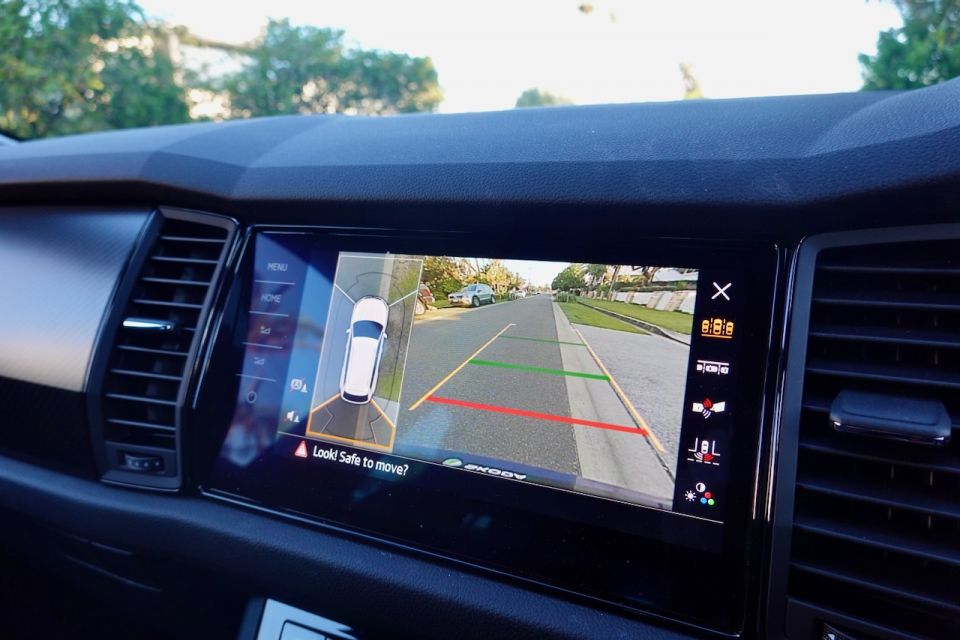
There’s also wireless charging with Apple CarPlay and Android Auto, and tri-zone climate control.
Instrumentation comes thanks to Skoda’s fully-digital Active Info Display with specific RS graphics including a large central rev counter display.
Further left is a 9.2-inch touchscreen with navigation.
The Kodiaq RS gets the maximum five-star ANCAP safety rating with nine airbags covering all three rows, along with a host of active crash avoidance systems such as autonomous emergency braking.
There’s also lane-keeping assist, side assist, emergency assist, rear cross-traffic alert and blind-spot monitoring – all of it standard on the RS, as well as two ISOFIX anchor points and three top tethers.
At less than 4.7 metres in length the Kodiaq RS is only a mid-sized SUV, but rear legroom is practically limo-like –and gives nothing away to boot space.
There’s a commendable 230L behind the third row and 630L if they’re lowered. If you’re not using the rear seats at all, cargo space expands to almost 2000L.
To add some perspective, we threw two 6ft 8 surfboards behind the front row without either pushing into the cockpit proper.
All three rows are upholstered in the same luxurious quilted Alcantara for a business class experience.
Storage is also exceptional, with a decent centre console bin with key-fob holder, cup holders and bottle holders. The driver’s door also gets a neat little rubbish bin, while the door pockets are soft to prevent unwanted noise from bottles, cans, or even loose coins and keys.
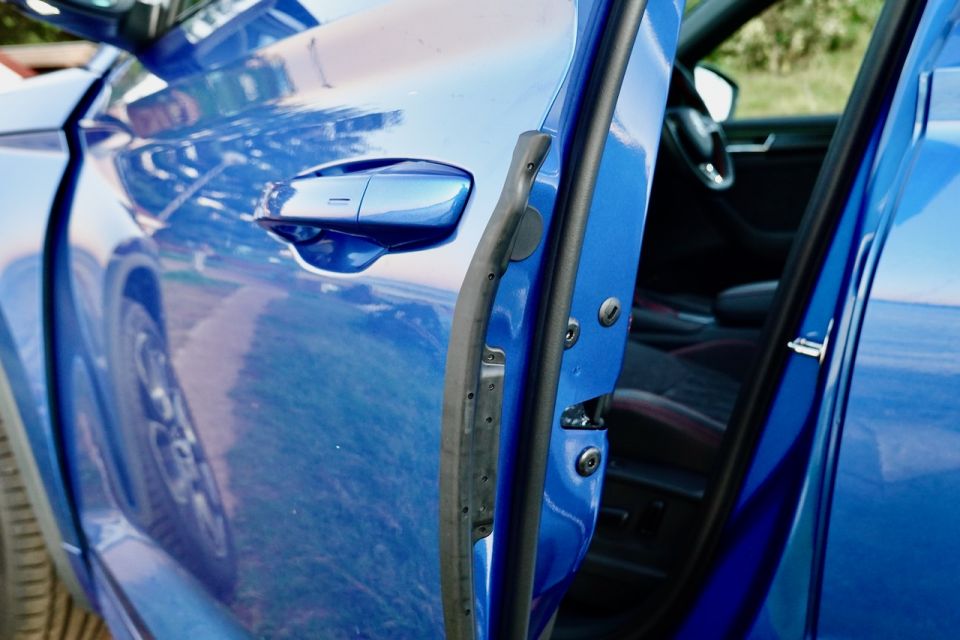
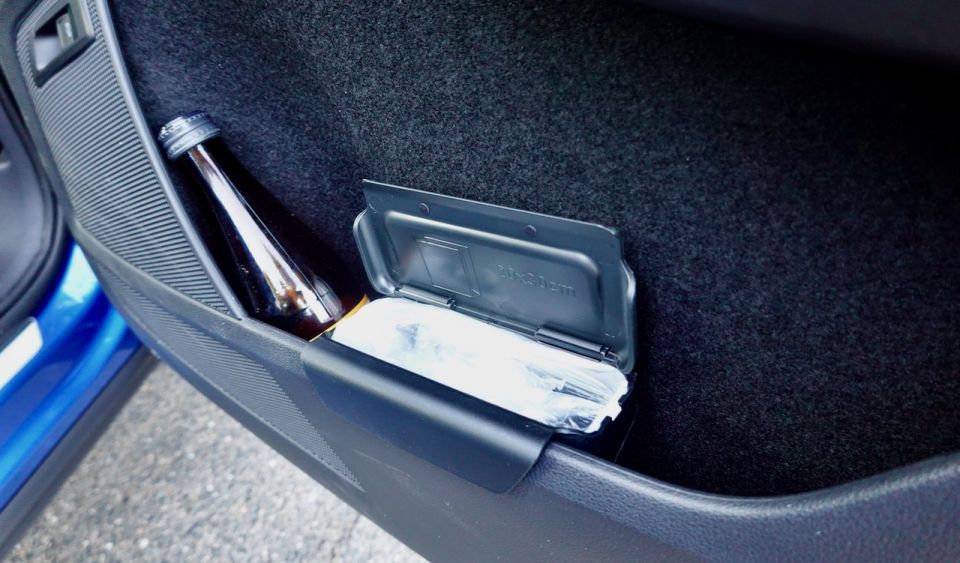
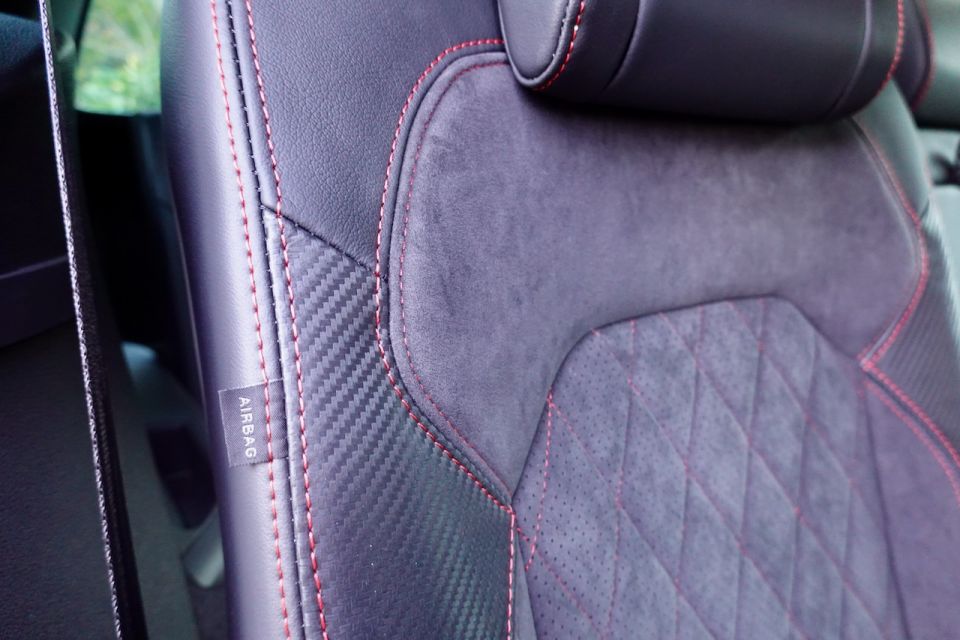

You also get two glove boxes. The top is rubber lined while the bottom one is air-conditioned. There are also manual sun blinds for the rear windows.
Driving the Kodiaq RS is the most powerful diesel engine in the Skoda range: a 2.0-litre twin-turbocharged diesel making 176kW at 4000rpm and a lively 500Nm from 1750-2500rpm, sent to all four wheels.
Those turbos are sequential. The first is a high-pressure unit with a small turbine and small compressor wheel with electronic adjustment that allows for quick throttle response, even at low speeds. The is a low-pressure unit with a large turbine and compressor wheel designed to generate higher boost pressure at high engine speeds.
At least, that’s the theory. It’s not quite as potent as that would have you think. It’s still fun and can still give you a gentle shove in the back if you gun it from 2500rpm, but the experience is entertainingly brisk rather than neck-snapping. Fine by me, especially in a seven-seat family-friendly SUV.
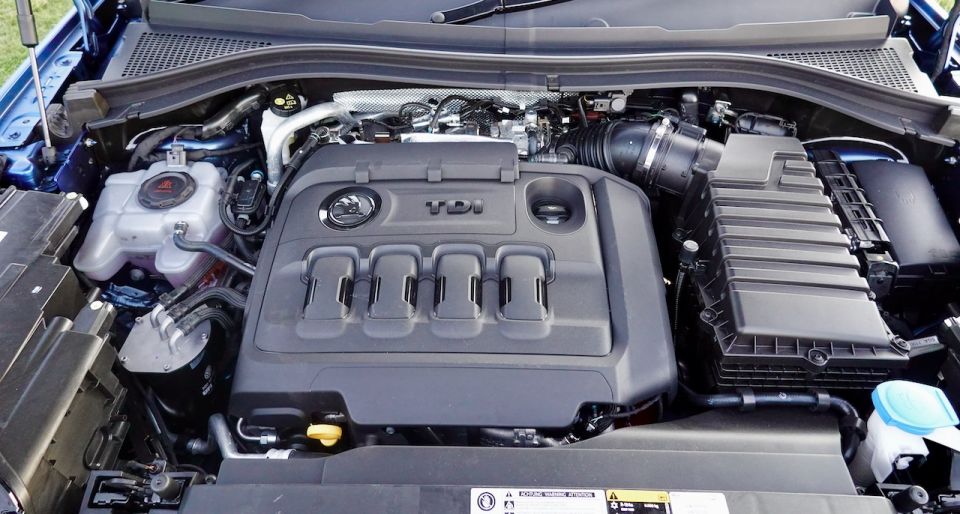
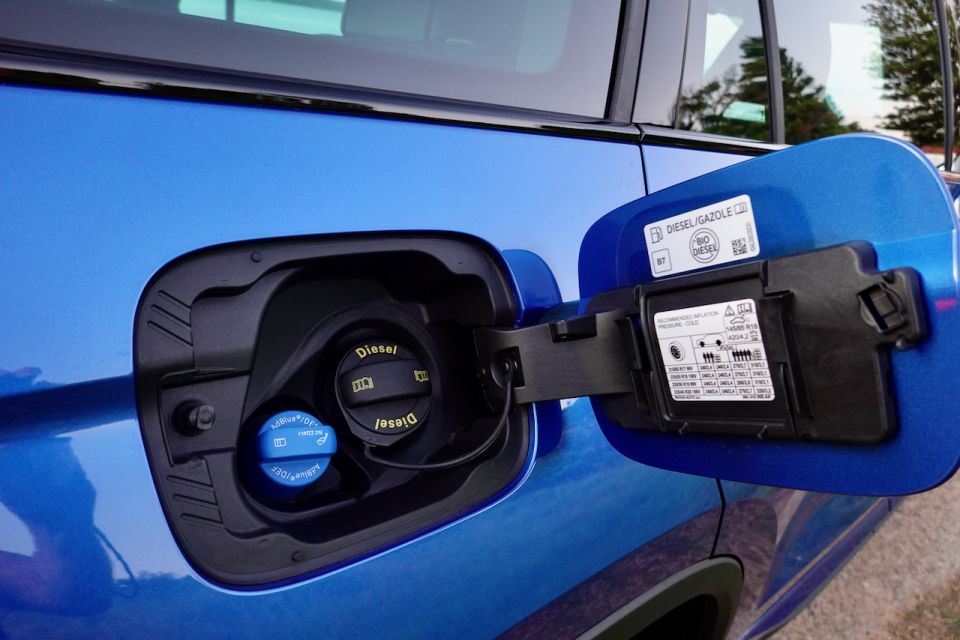

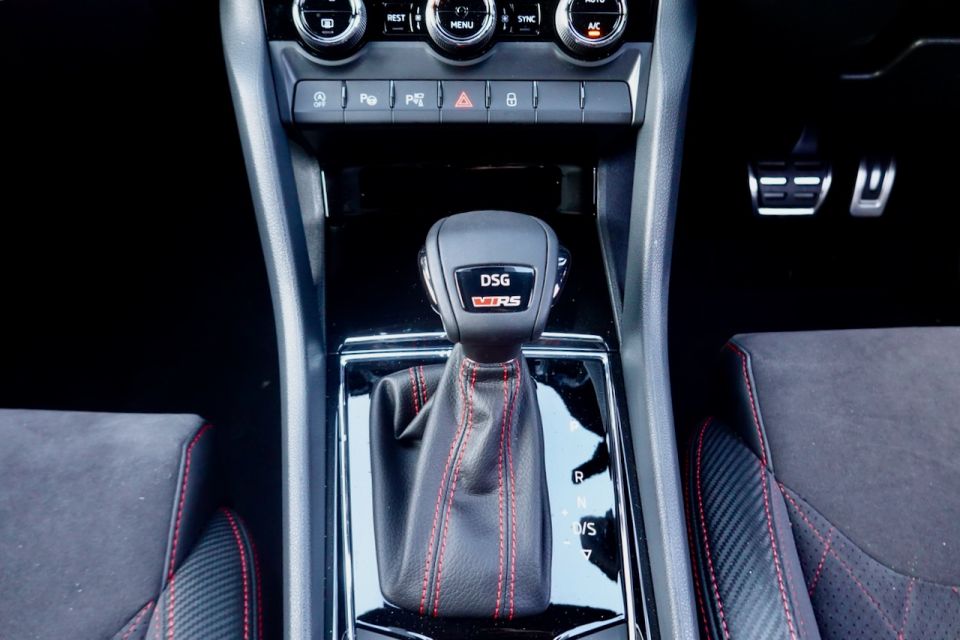
If numbers are important, the Skoda Kodiaq can go from standstill to 100km/h in a claimed 7.0 seconds, but there are occasions when it feels slightly quicker. Top speed is 221km/h.
By comparison, the Maserati Levante diesel uses a V6 diesel but only manages the 0-100km/h sprint in 6.9 secs. Fact is, Skoda has itself a nice little niche with the RS performance.
Hit the starter button and there’s an immediate, satisfyingly exhaust note that not only finds its way into the cabin but also outside. Only, it’s not a natural sound.
Rather, it’s the wizardry of something called Dynamic Sound Boost, which augments the sound of the car – in the case of the Kodiaq RS, a relatively innocuous diesel clatter.
Not really what you want to hear from your 176kW and 500Nm performance crossover.
Some might jump up and down about artificial noise – not me, because this diesel sounds great especially when you’re getting stuck in and enjoying the mid-range pull.
And it marries up nicely with the seven-speed dual-clutch transmission, with responsive shifting through the paddle shifters and noticeable blips on the downshifts with the engine locked in Sport.
Sport also unlocks a deeper exhaust once you pull away and revs rise 2300rpm. The RS still resonates in normal or comfort mode, just not as prominently.
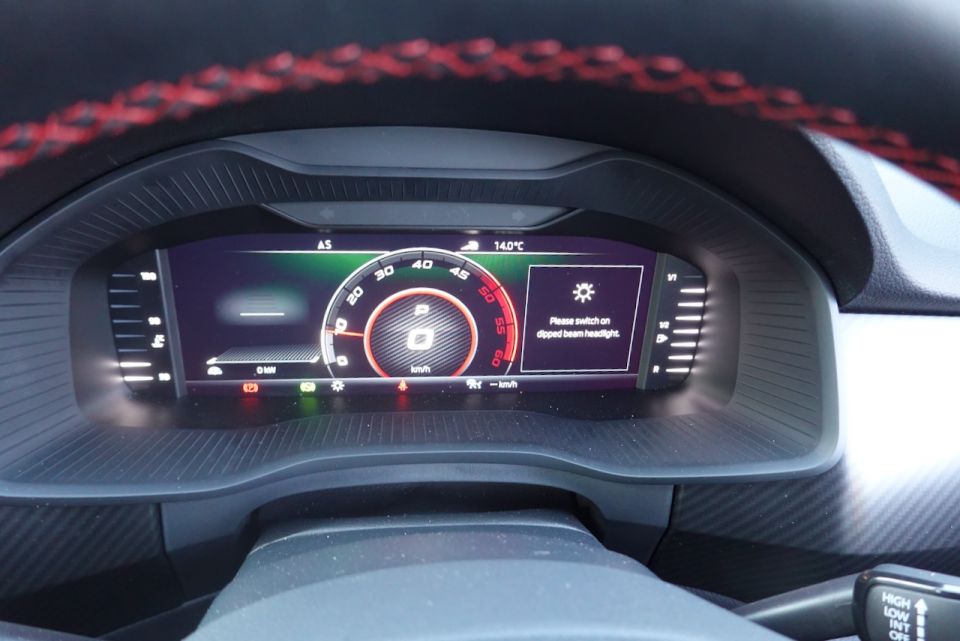
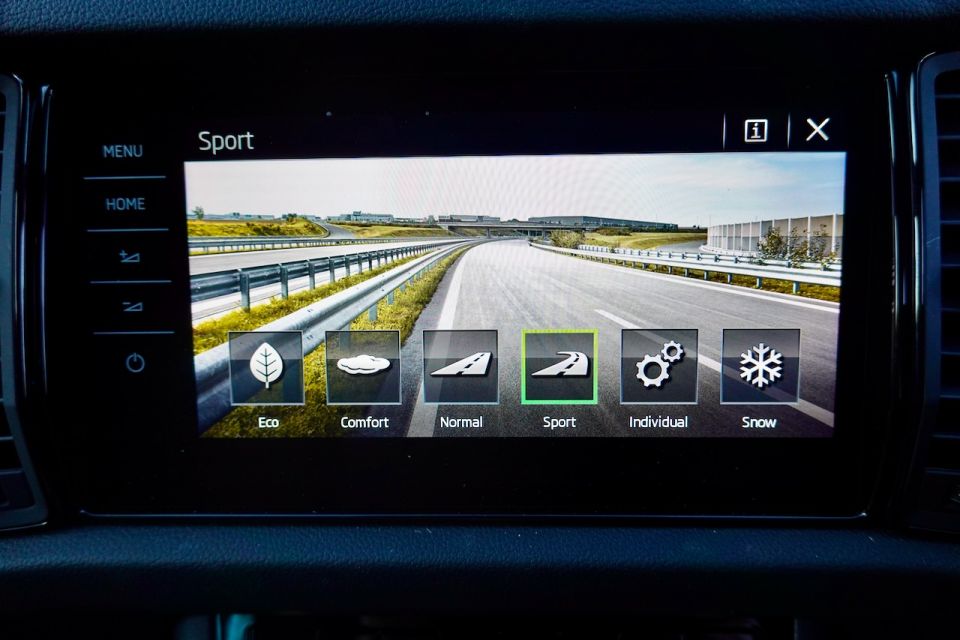

Don’t laugh, but when the RS is wound up and punching through the gears it sounds strangely like Audi’s LMP1 coming through the famous Esses at Le Mans. I know because in 2011 I was there in a trance-like state listening the downshifts and throttle work as the cars powered out.
Despite the sequential turbos there’s still some lag off idle, especially if you bury the throttle from a standing start. Way more effective to ease into the throttle rather than a sudden dump. They eventually spool up and the big Skoda gets on with it, but not before it hesitates while deciding what to do.
Impressive, too, is the ride and handling balance in Comfort. You get more body roll but it’s not something that unsettles the vehicle because grip and traction remains solid.
Hitting the drive button brings up a menu of suspension and engine modes. While Sport stiffens the chassis up immediately, it’s also uncomfortably firm – unpleasant even.
The sharp steering is a joy when you want have some genuine fun in the Skoda. At times it felt like four-wheel steering, such was the minimum arm movement required even for tighter turns.


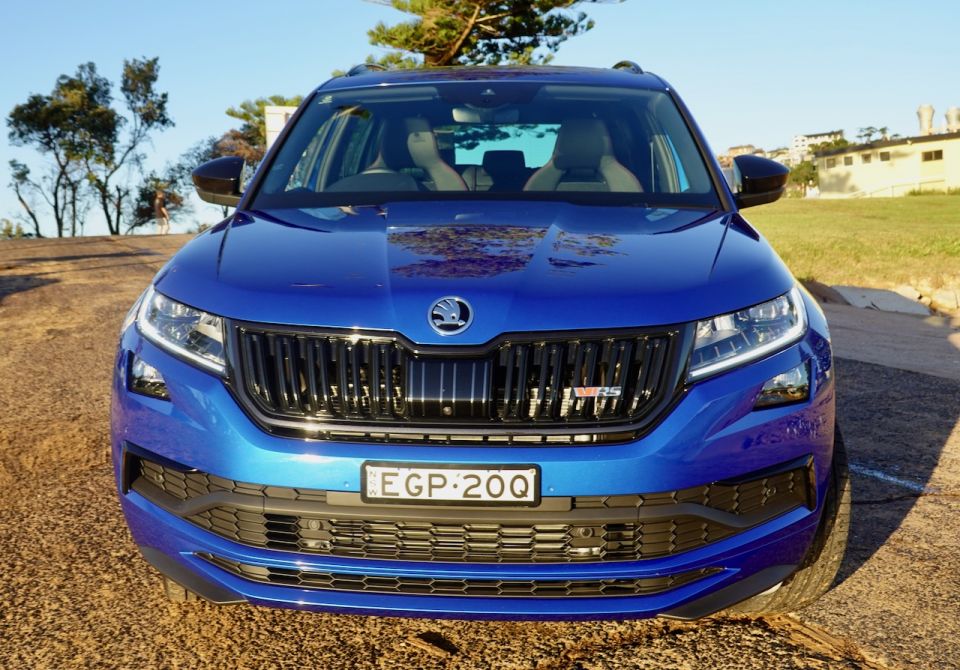
Same goes for steering feedback. There’s plenty of it, and frankly any issue I may have had about the 235/45 tyres not being wide enough wasn’t relevant anymore.
Apart from some low-down lag, you’d be hard-pressed to find close to this level of performance and enjoyment from a four-cylinder diesel for close to this kind of money.
The Skoda RS is covered by a five-year/unlimited km warranty, as well a pair of pre-paid comprehensive service packs including a three-year/45,000km one for $900, or five-year/75,000 package for $1700.
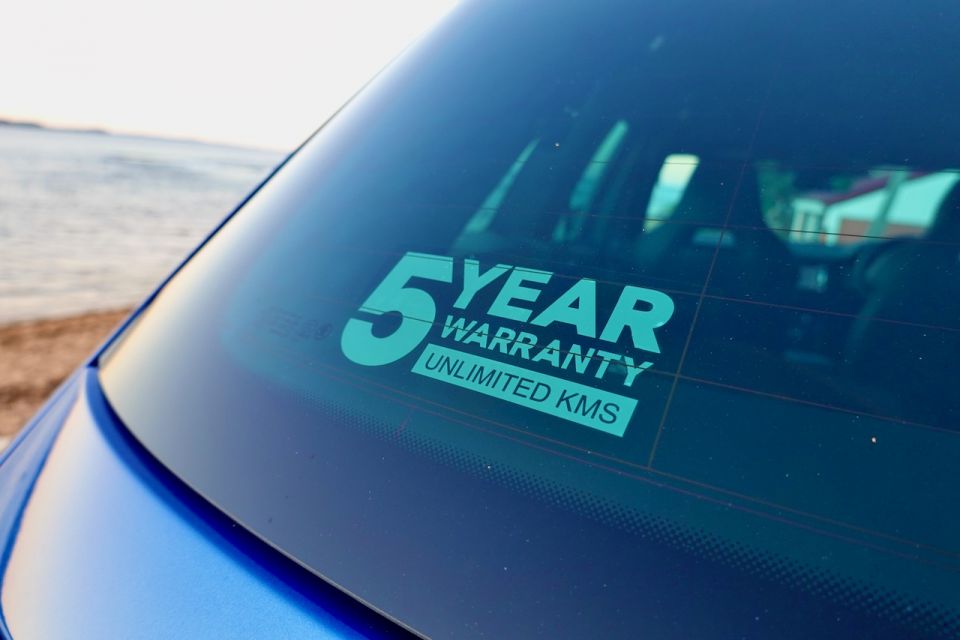

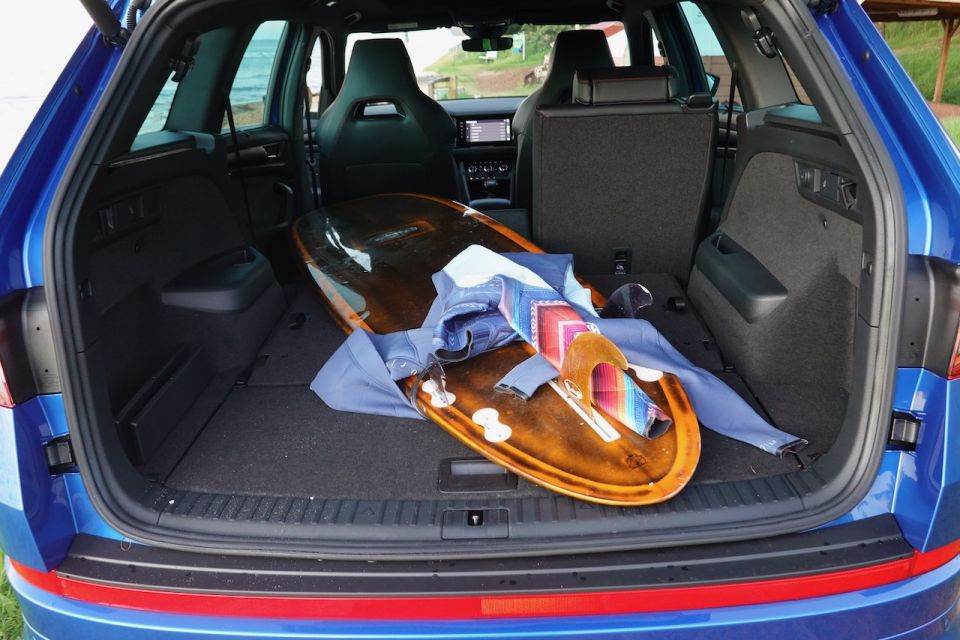
Tipping the scales at 1714kg the Skoda RS isn’t really a heavyweight despite sitting in the middle of mid-sized and large SUV categories. It’s the reason you might just have a shot at getting close to the claimed 6.2L/100km combined consumption.
We got a little more than that (7.6L/100km) but that’s because we had too much fun.
There will be so-called enthusiasts who scoff at the notion Skoda is billing the Kodiaq RS as a performance SUV. Let’s not look too hard at the Nürburgring record, despite how legitimate and deserving it maybe.
Either way, it’s a fun machine that should satisfy people looking for genuine excitement in the family chariot, that won’t break the bank, and covers off almost every imaginable want and need.
The fact is Skoda has put together an action-packed and feature-laden family SUV that delivers on so many counts that it’s likely to be a strong contender for car of the year – if that’s still a thing.
Bravo.
Where expert car reviews meet expert car buying – CarExpert gives you trusted advice, personalised service and real savings on your next new car.
Anthony Crawford is a CarExpert co-founder and senior presenter with 20+years in automotive journalism and content creation.


William Stopford
2 Hours Ago


Max Davies
2 Hours Ago
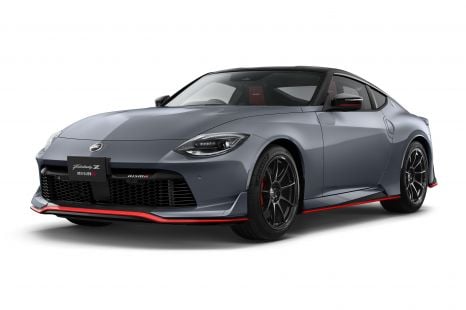

Derek Fung
3 Hours Ago
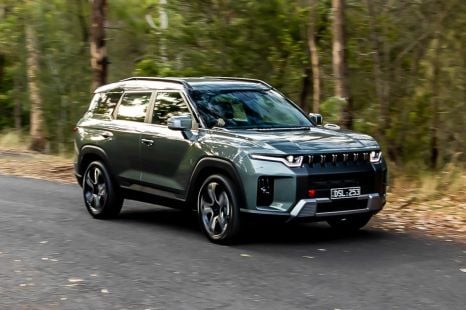

Matt Campbell
10 Hours Ago


Ben Zachariah
1 Day Ago


Damion Smy
1 Day Ago